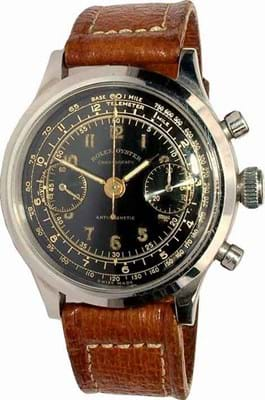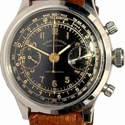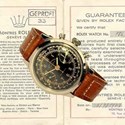The black-dialled Oyster Chronograph model, ref 3525, had been estimated at £30,000-50,000 on December 2 at Bourne End Auction Rooms and was bought by a female collector bidding on the phone.
"A huge amount of interest emerged two weeks prior, and on the day the bidding was absolutely incredible, with banks of phones here plus the internet lit up like a Christmas tree. A number of people travelled to be in the room from all over the globe - it was quite phenomenal," said an understandably delighted Simon Brown, director of the saleroom, who was the auctioneer.
While the condition was described as exceptional by consultant Martyn Perrin, both he and Brown emphasised that the history of the watch made it special.
Perrin's extensive research for the catalogue says the Rolex's owner, Flight Lt John 'Jack' Williams, was the 67th officer to escape though the 'Harry' tunnel during the Great Escape from Stalag Luft III in March 1944.
He was one of the 50 selected and executed afterwards on Hitler's orders. The watch was returned to his family by a fellow POW officer, Donald Wilson, when hostilities were over. Williams had given his watch to him for safe keeping.
The vendor of the Rolex inherited it and other items - such as Williams' medals also sold in the same lot - from Williams' mother in the early 1980s.
Under the Geneva Convention military issue watches could be confiscated but not personal ones. Hans Wilsdorf, managing director of Rolex in Switzerland, ran a remarkable scheme during the war whereby British POWs could order a watch to be delivered to the prison camp but defer the payment until after the conflict.
Perrin told ATG: "It was a terrific gamble for Rolex but the tide of the war was turning by 1943. They had a captive audience, as it were, because they knew the majority of people in the POW camps would have had their watches confiscated."
Payment was one risk, but Wilsdorf also had to rely on the wristwatches reaching their intended customers to honour his promise. Perrin has found letters showing that no less than three Oyster Perpetuals were sent to one army officer in Offlag VIIB, to satisfy an order for just one.
Chronograph Model
Only about 200 of the Chronograph models were made over about four years up to 1944. "Most of the POWs ordered the cheaper basic model, the Speed King," says Perrin. "This is only the third one I know of sent to a POW camp."
Bourne End sold another of these POW watches for £50,000 in November 2013, and that result was key to securing the latest watch for this sale. The serial numbers of the two watches were separated by just seven digits.
Brown added: "If you had asked me before the sale, I would have been ecstatic with £90,000-100,000. As an auction house, we thought with a bit of luck it might go £15,000-20,000 beyond what we achieved for the last one but we didn't expect in our wildest dreams it would go that high."
The underbidder was a man in the room on his mobile phone, thought to be an agent from abroad.









